Fig. 11.1
The course of tunneling is planned based on landmarks and the best direction for placing the tunneling tool
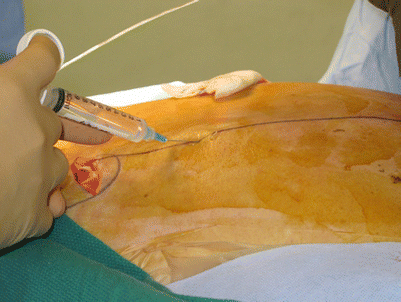
Fig. 11.2
Local anesthesia placed along the tract for tunneling
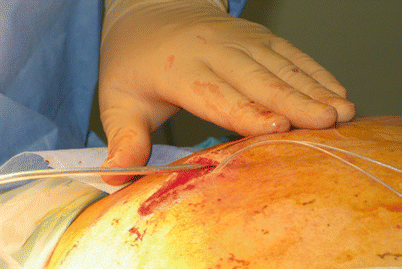
Fig. 11.3
Initiation of tunneling at lead insertion site
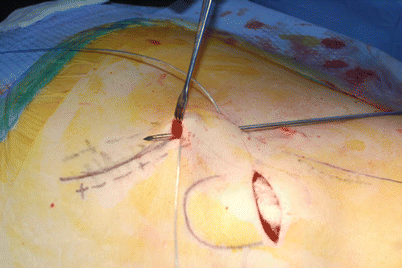
Fig. 11.4
Angle of tunneling with attention to sterile technique
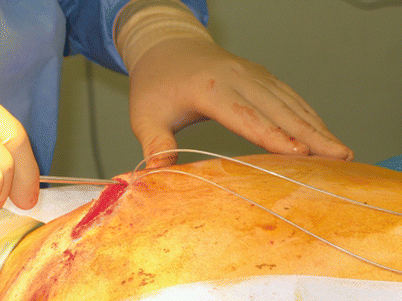
Fig. 11.5
Palpation of the course of tunneling to ensure adequate depth
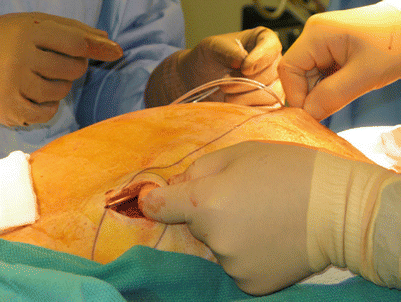
Fig. 11.6
Continued progress of tunneling toward the pocket
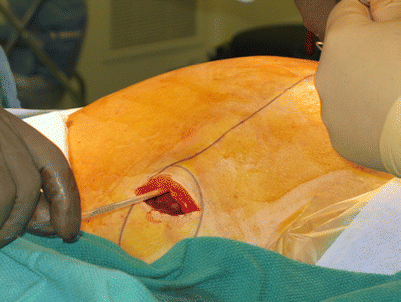
Fig. 11.7
Final passing of the device through the tissue to complete the tunneling process
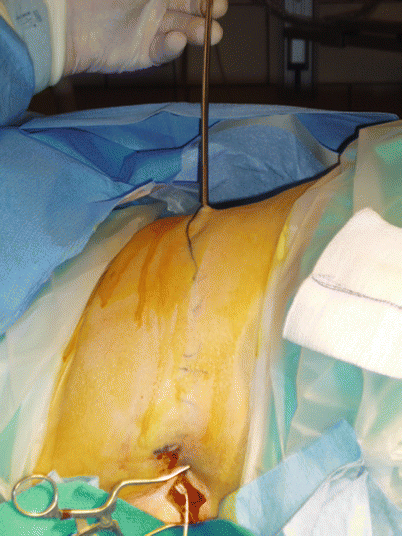
Fig. 11.8
Lateral decubitus representation of tunneling along a planned direction
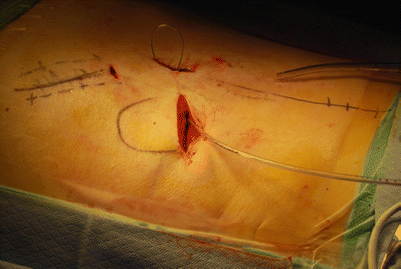
Fig. 11.9
Depiction of tunneling from the posterior lead position to the generator pocket
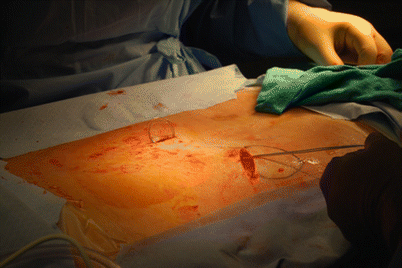
Fig. 11.10
The completed tunneling procedure in lateral decubitus position
11.3 Risk Assessment
1.



The risk of tunneling depth should be considered. The physician may tunnel in a superficial plane, causing skin irritation or eventual erosion. The physician may tunnel too deeply, causing injury to muscle or more serious dilemmas such as visceral or pleural injury.

Full access? Get Clinical Tree







